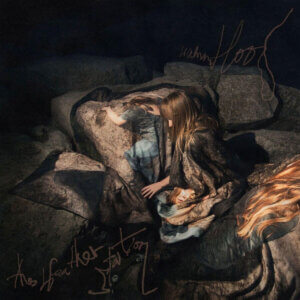
8.9
Random Access Memories
Daft Punk
The late 1990’s were terrible in almost every aspect, but personally it was especially downtrodden. I was living in the suburbs, just out of high school, and my hair still long from metal yearnings. After grunge, rock music not to mention metal, was in an awkward phase. It was trying to reinvent itself which was epitomized by the albums released by the two biggest bands at the time: Metallica and U2. Subconsciously we yearned for something to usher us into the new millennium, the sound of the future. Enter a faceless band that blew into the world with a video that featured a lonely human with a head of a dog that was lost in the city. His ghetto-blaster that pumped out Daft Punk’s first single “Da Funk” re-introduced the mainstream masses to the electronic music world. With the release of only their fourth album Random Access Memories, Daft Punk mark a return that feels like a celebration, a celebration of all the electronic music they’ve inspired, but also what has inspired them.
After the release of their third album Human After All they took a recording break of sorts, did some touring, all the while preparing for their work on the Tron: Legacy soundtrack. Human After All like most third albums was the end of the opening chapter of Daft Punk’s legacy. A fourth album would need to start a new story, evolving and maturing their sound if they were going to remain relevant in the musical world, and Random Access Memories hits all of that. Thomas Bangalter and Guy-Manuel de Homem-Christo have gone back to the basics in the recording of this album using session musicians, and abandoning the use of samples. It harkens back to the heyday of disco with simple instrumentation with some tracks solel purpose being to get you moving, while others take a step back to weave a narrative of sentient robots remembering their past. I suppose you could call it a concept album, but Daft Punk are a concept act in of themselves, and the music is so playful at times that you might not care about the story they’re telling because you’re too busy dancing. The need to get people moving is really the heart of what the robots are all about, and they certainly do that with instant dance floor hits “Give Life Back to Music”, “Lose Yourself to Dance”, and “Get Lucky”. The latter two feature the vocals of Pharell Williams, and while these tracks certainly stand out, it’s the albums venture into using featuring vocalists in the songs and reliance on non-dance numbers that make this album shine.
“The Game of Love”, “Instant Crush”, and “Doin It Right” are all down tempo tracks that show Daft Punk revealing some heart under their robot exteriors, while it does help with the contributions from Julian Casablancas and Panda Bear. “Giorgio by Moroder” sees the Bots pay homage to their hero Giorgio Moroder, who actually lends his hand to the track with his story of his early days before he became the electronic disco pioneer. At 9 minutes it’s the epic of the album, and is almost a retrospective of Daft Punk’s work with classic sounds that evolve to classical instrumentation that pops up later in the album especially in “Beyond”. There are a few surprises and moments which will scratch a few heads, and the collaboration with Paul Williams on “Touch” is certainly one of them. The guy that wrote “An Old Fashioned Love Song”, “Rainy Days and Mondays”, and “Rainbow Connection” is not one you’d immediately think of as a natural Daft Punk collaborator, but the song is catchy and well structured for an 8 minute opus. I wonder though if a female singer would have really taken this song to the next level, but Paul Williams’ grizzled voice does have a certain charm to it, and reiterates the nature of the theme of old memories. The only misstep of the album is “Fragments of Time”, which features Todd Edwards. While it certainly feels like a song from a bygone era, it also reminds us of the incredibly cheesy music that came out of this time. The song is certainly catchy, I did catch myself singing along to it a couple times, but I definitely didn’t feel good about it. The album ends on a climactic note with “Contact”, which DJ Falcon collaborated on. It’s the only song that uses samples (a brief clip from NASA about a UFO), and is by far the most rambunctious, perhaps teasing us as to what’s in store for the Dafts next.
The celebratory nature of Random Access Memories also extends out to the fans, critics, and the vast musicians and artists that have been inspired by Daft Punk. The reception to this album already has a built in positive energy to it, because people have good memories of the band, mostly because music that makes you dance also makes you feel good. There will be some backlash to a band that is no longer fresh, there will be backlash to an album that isn’t dancy enough, and there will be backlash in the remembrance of disco which many people call the low point of music evolution. The album though is a simple reminder of the things that we like about Daft Punk, it’s the perfect album for your late night disco musings, and robotic love making.
– Michael Unger
Latest Reviews
Tracks
Related Albums
Related News
Advertisement
Looking for something new to listen to?
Sign up to our all-new newsletter for top-notch reviews, news, videos and playlists.









